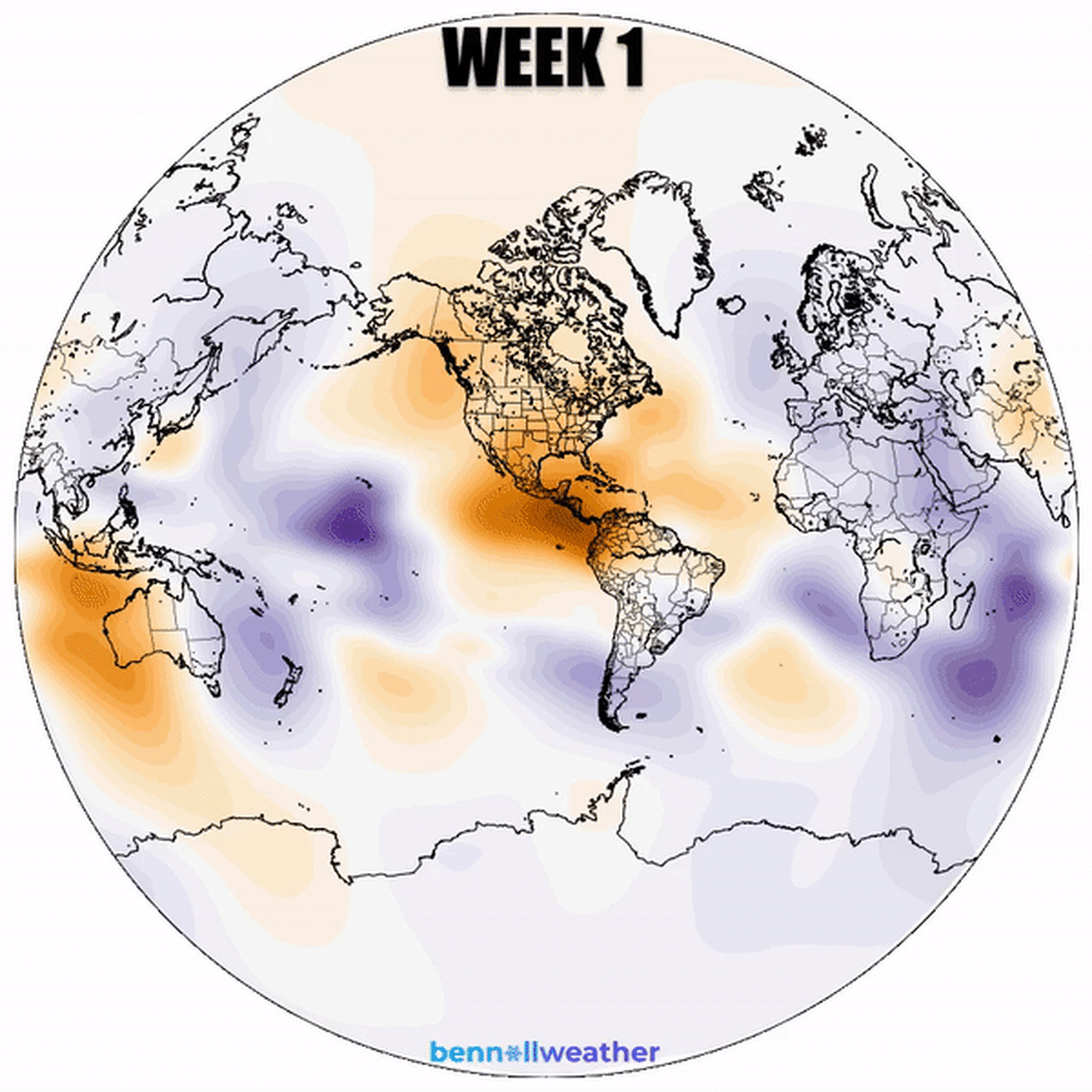The End Game
After tracking over 3,292 miles across the Atlantic Ocean, Florence will become one of only two hurricanes to make U.S. landfall from its origination point off the coast of Africa since 1851. It also becomes the only hurricane since 1851 to make landfall from its location that was observed in the middle of the Atlantic Ocean back on September 6th. For the last 2-3 days, the landfall target has been focused on an area between Myrtle Beach, NC and Morehead City, NC, with the primary area of impact being just north of Wilmington, NC in New Hanover, Pender and Onslow counties.
With Florence’s center core finally showing up in the long range radar, it would appear the end game is finally near. The biggest change in the forecast since the start of the week has been the change in intensity, which is a known issue in hurricane forecasting. There has been some general improvement in skill over the last decade, but more recently over the last five years, intensity forecasting has been challenging.
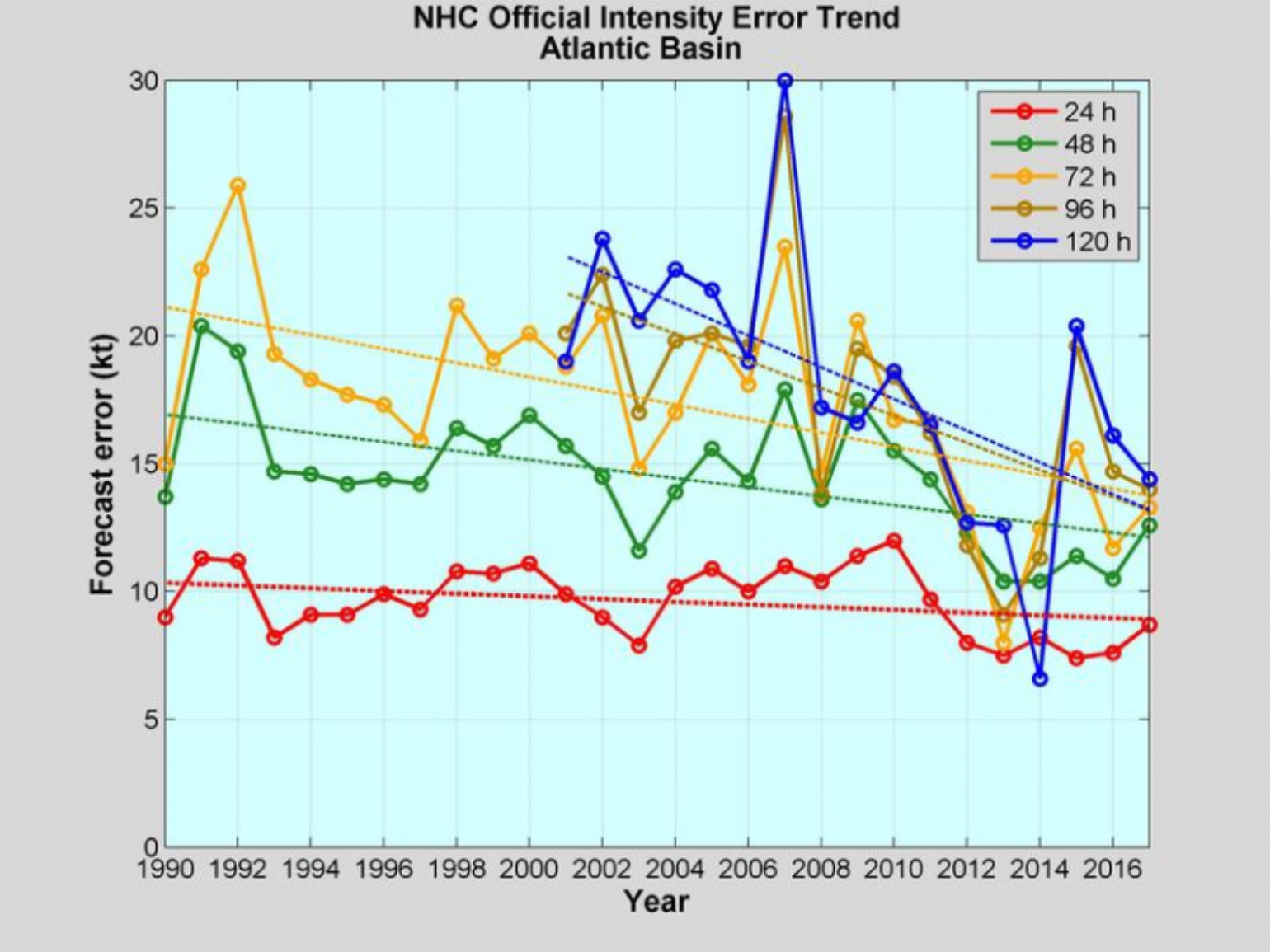
As Florence begins to move over the warm waters of the Gulf Stream, will it regain strength? This is unlikely, as the core of the hurricane is finally falling apart due to multiple eyewall replacement cycles, along with dry air and wind shear that have been finishing the job over the last 24 hours. However, because Florence is moving over the warm waters of the Gulf Stream and wind shear is a bit more relaxed, it’s likely that only gradual weakening will occur until its landfall around 3:00 a.m. EDT tomorrow. Shortly after this expected landfall, a more rapid pace of weakening is expected as the center of the storm moves inland into central South Carolina.
Storm Surge Impacts
Hurricane Ike made landfall on the Texas coast 10 years ago this morning. It was only a strong Category 2 hurricane at landfall, but don't make the same mistake by judging Florence as only a Category 2 hurricane, as disastrous rainfall flooding and storm surge impacts are likely to occur. Based on the NHC storm surge inundation forecast, the storm surge is expected to be between 9 and 13 feet from Cape Fear to Cape Lookout, NC, where the natural concave shape of the coastline will enhance the surge. It appears that the surge will come ashore just after high tide tomorrow, which occurs around 11:30 p.m. tonight with low tide occurring at 5:00 a.m. tomorrow.
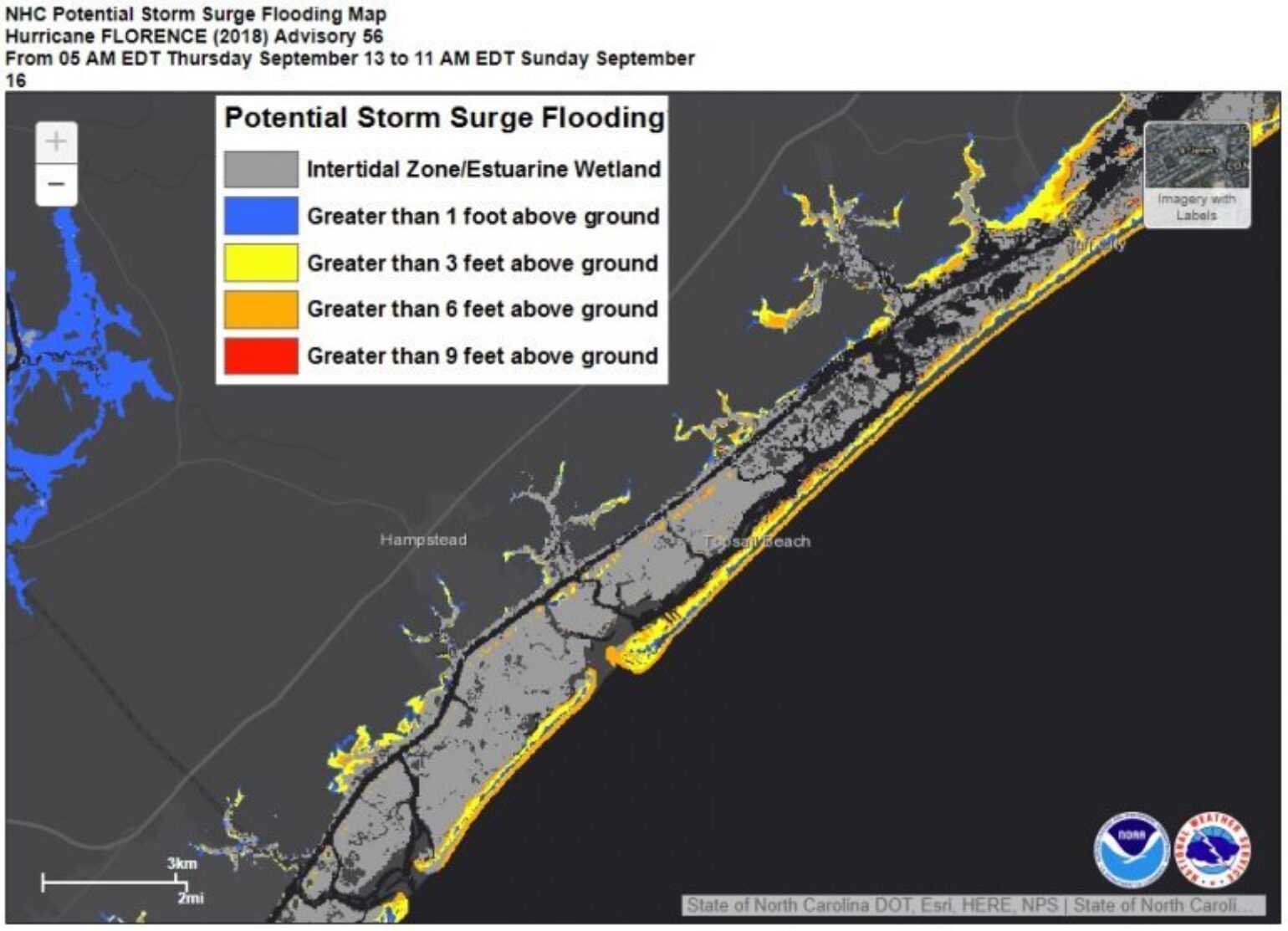
High Impact Rainfall
Disastrous flooding is expected over wide areas, with the heaviest rainfall amounts coming near the coastal Carolinas. The Central Appalachians could also experience heavy rain over mountainous terrain, and orographic lifting rain will likely trigger mud and rockslides. It still appears likely that the North Carolina state record for rainfall from a named storm – 24.06 inches from Hurricane Floyd in 1999 – will be broken, but it’s unlikely that the greatest 24-hour rainfall record of 22.22 inches will be broken. Because Florence will slow its forward motion after landfall, the large amount of rainfall is a big concern as it all flows to the Atlantic Ocean. The constant onshore flow over the next two days could back up some of the water trying to escape from the inland tributaries.
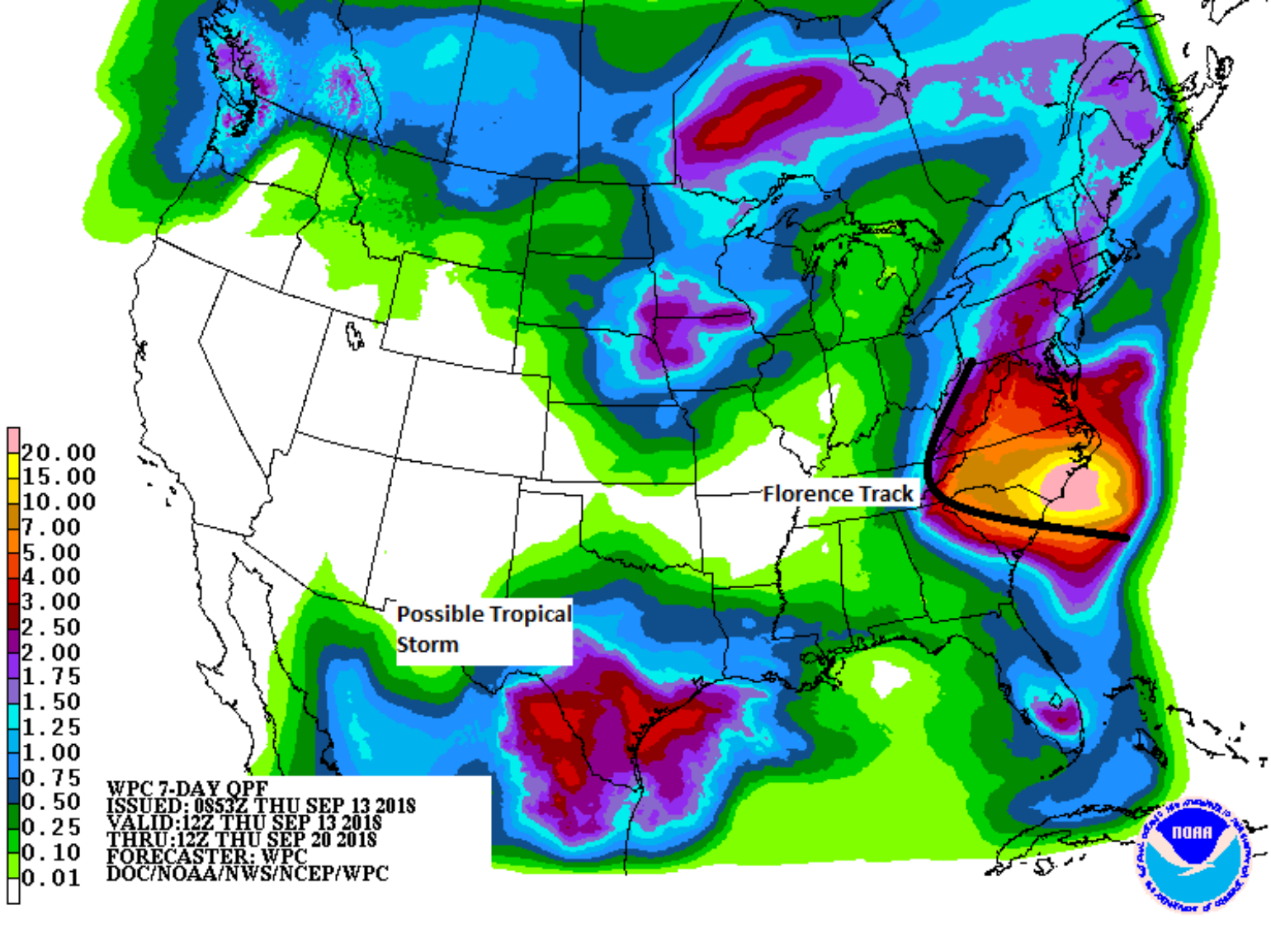
The National Flood Insurance Plan (NFIP) Take-Up Rate in the Carolinas as a percentage of county housing units is less than 1% for many inland counties, with much of the NFIP risk located at the coastal counties. Even the take-up rates in the highest storm surge impact counties of New Hanover, Pender and Onslow counties is relatively low , illustrating the large protection gap that exists across the Carolinas.
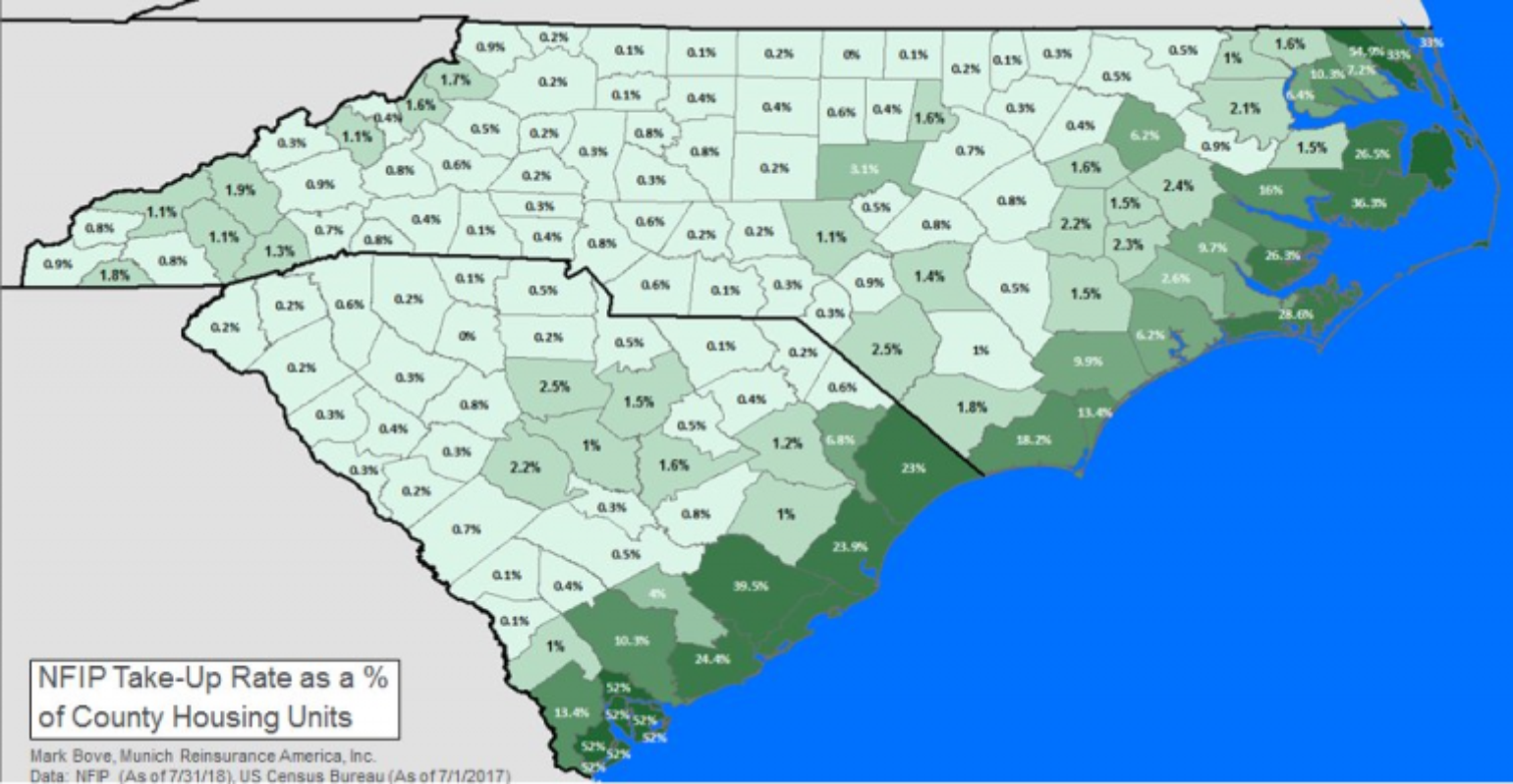
Wind Impacts
Tropical storm-force winds (39-plus mph) are expected to arrive in the hurricane warning area by early this afternoon. Hurricane-force winds (74-plus mph) may arrive by this evening. Even though Florence is expected to be much weaker than initially thought, it does not mean that wind damage won’t occur. Numerous downed trees and long-lasting power outages could occur near where Florence’s center strikes and even further inland. Both Hurricane Ike 2008 and Hurricane Sandy 2012 were large hurricanes in size and had a wide range of impacts.
Another thing to watch with Florence is the relatively slower movement once it makes landfall. Hurricane damage is often associated with peak wind speed. However, an AIR-Worldwide Blog by Dr. Vineet Jain in 2010 suggests that claims data and post-disaster survey findings repeatedly and consistently show that the amount of damage a structure experiences is also a result of wind duration—how long a hurricane's winds batter a structure. In the end, neither peak wind speed nor wind duration are a favorable scenario for a structure’s ability to endure damage above various design code levels. The cumulative stress load variations from long term exposure to hurricane winds can increase the overall damage potential to a structure beyond just the peak gust endured at a location. However, keep in mind that Category 2 Hurricane Arthur that hit the Outer Banks in 2014 did not register as a Property Claim Services catastrophe event, illustrating how building codes are working and how resilient structures are becoming along the coastline of North Carolina.
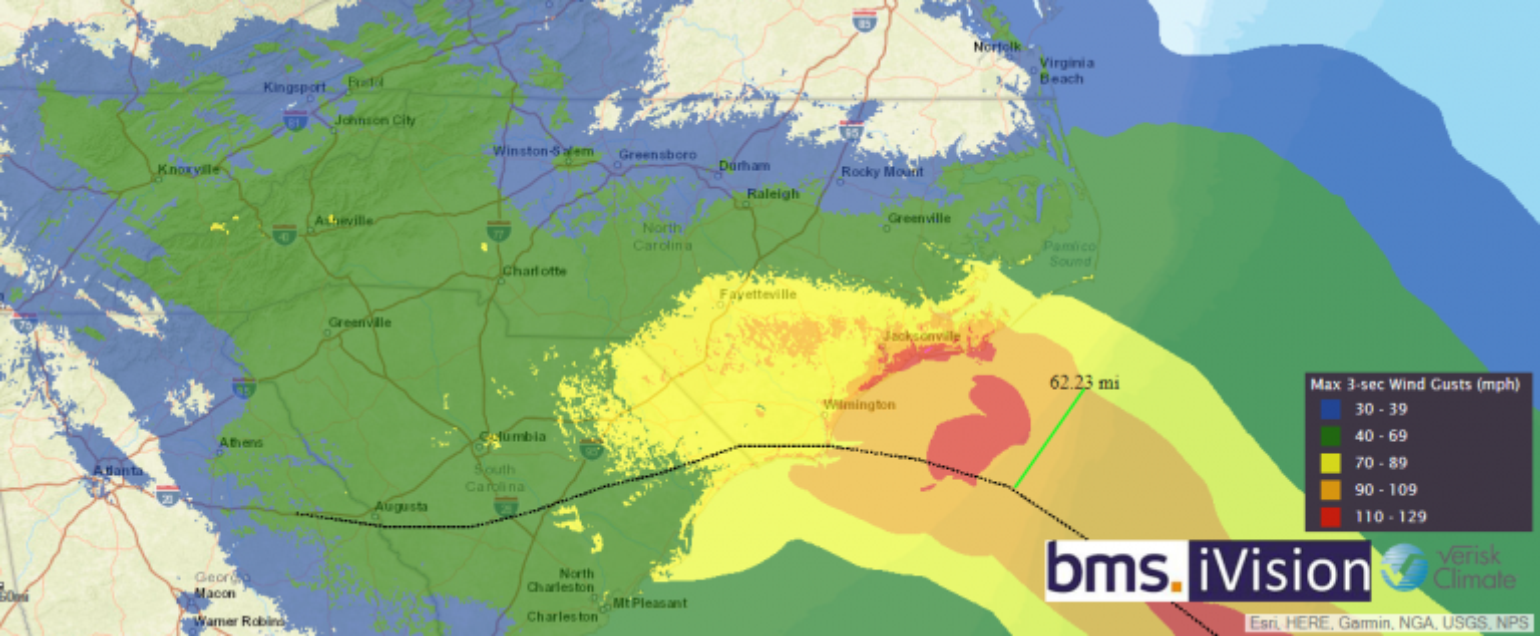
Tornado Impacts
Yesterday I bought up the risk of tornadoes from landfalling named storms. After doing a bit more research, it seems that the tornado threat from Florence in the Carolinas might be higher than we're normally accustomed to seeing with landfalling named storms. Florence's larger and more intense wind field increases low-level shear over a larger area, favoring more tornadoes. See McCaul (1991). Clearly this could add another element to the landfall threat associated with Hurricane Florence and tornado watches are posted.
Power Outages
Given the potential amount of rainfall and tropical storm force-winds that could reach areas well inland, the insurance industry should expect high amounts of tree fall that will produce power outages. The Guikema Research Group at the University of Michigan has now produced power outage maps. As the storm makes landfall, www.poweroutage.us will be a good resource for real-time power outages.
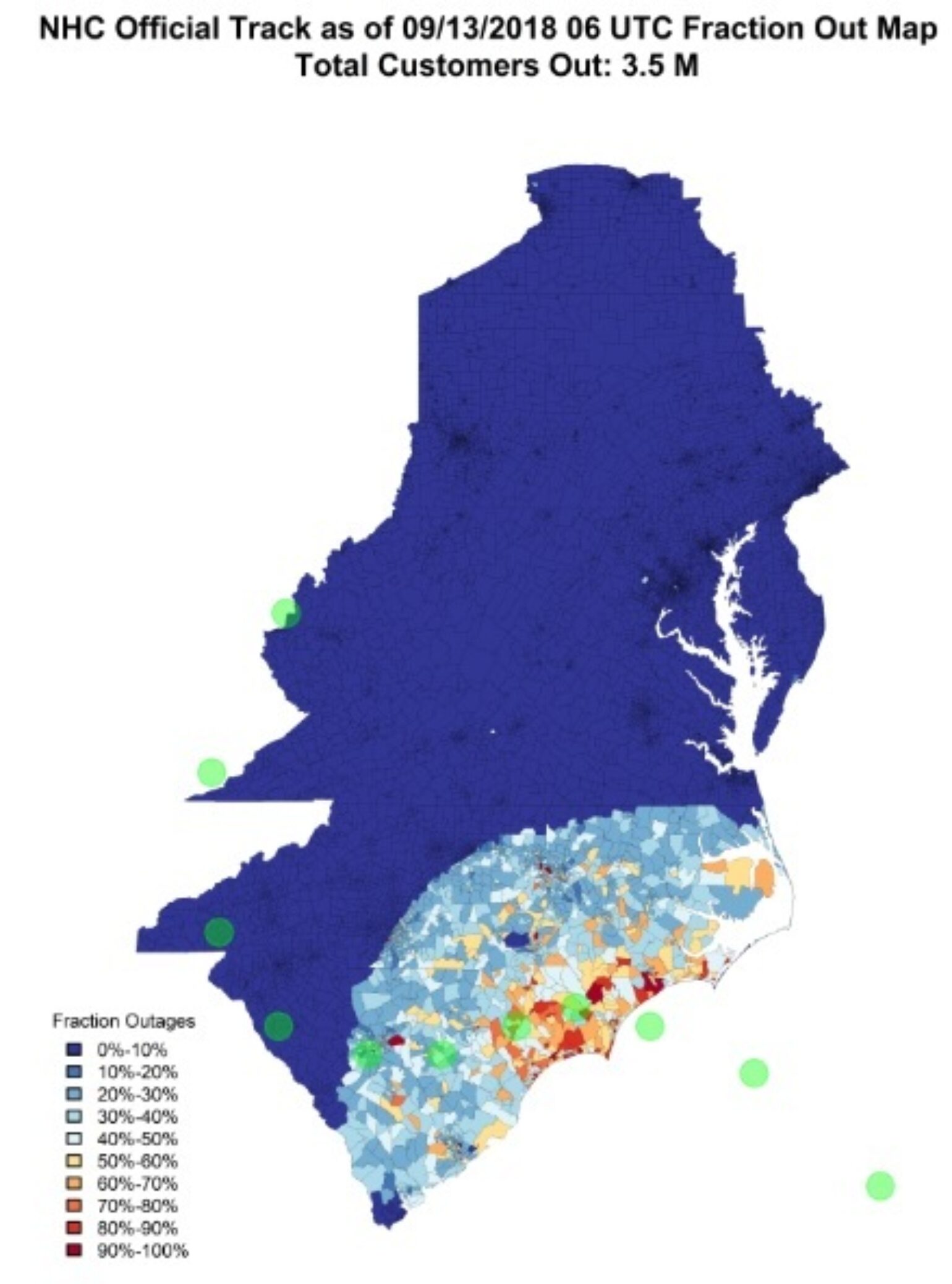
Quiet Time Ahead
Keep eyes on Isaac which will likely be reclassified as an open wave, but some models still bring it into the Gulf of Mexico later next week as a named storm.
Overall there has been a fair amount of activity lately, but keep in mind that we are two days off the peak of the hurricane season and it is all downhill from here. As I mentioned at the start of the week, the tropical Atlantic should begin to shut down any new activity in the coming days, but any activity that has already developed will still need to be watched closely. The next expected uptick in activity should be the first or second week of October.
